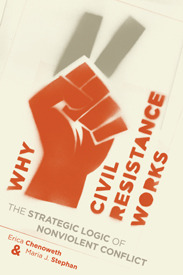What do you think?
Rate this book


320 pages, Hardcover
First published July 8, 2011
Insurgents who claim that violent resistance is necessary are probably always wrong. In fact, we conjecture that many of the groups that claim violence as a last resort may have never attempted strategic non-violent action, judging it to be too difficult at the outset.